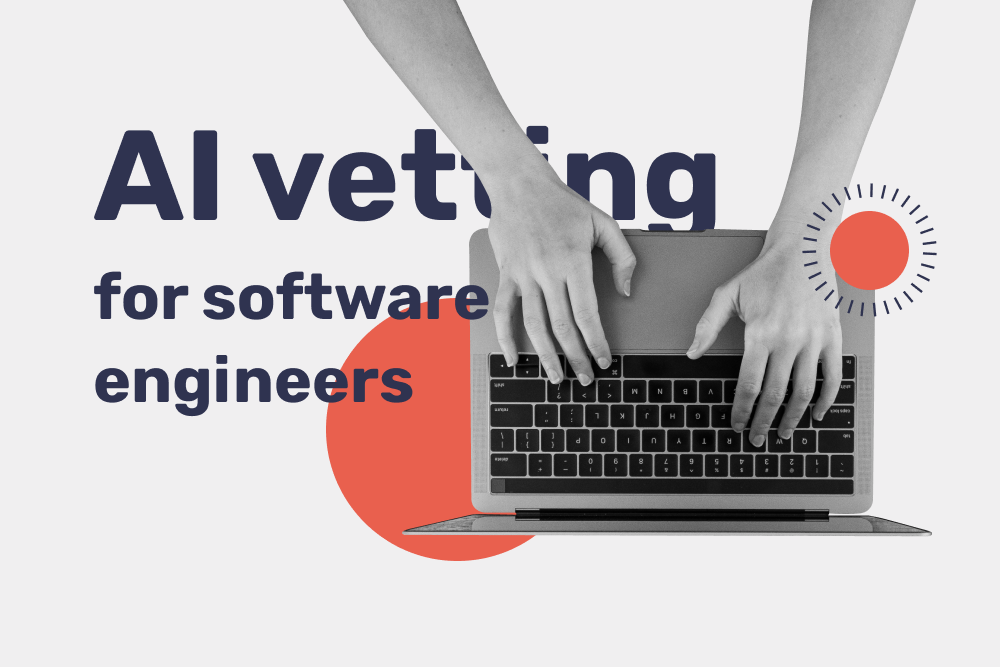Hiring international talent has never been so simple and difficult at the same time. While the recent pandemic erased the boundaries and made remote work a new normal, the technical talent becomes harder to find, attract and retain. Still, these are not all the challenges the companies face on the way to recruiting tech talent internationally, and in this article, our talent sourcing experts analyzed them and provided viable solutions.
Before we start our interview, let’s meet our tech talent sourcers:
Anastasia Shviatsova is a talent sourcer at Bridge. She has a sales background and tech talent recruitment experience. It takes her 4 days to collect a database of candidates and up to a week to suggest a candidate.
Karina Shamaeva was the Head of Business Development for 2,5 years and then decided to switch to recruitment. Her deep understanding of effective communication practices and practical skills with lead generation and sales tools allowed her to re-purpose the experience she got in sales and use it for talent acquisition. It takes her 4 hours a week to gather a database of candidates and set up the automatic mailing. Recently, she managed to close five vacancies in 2 months – from scratch to accepting a job offer.
And now, let’s find out what our experts share on hiring challenges and recruitment difficulties the companies face globally in 2023.
The main challenges companies face globally when hiring technical talent
Together with our technical talent sourcers, we identified and discussed five major challenges of hiring software developers. Let’s take a closer look at them.
Challenge #1 – Tech talent shortage
The first major challenge companies face when hiring technical talent is the tech talent shortage. While the demand for software developers and engineers has grown, the supply of skilled professionals has not kept pace. This means that businesses have to compete for the best candidates by developing more creative and well-thought-out talent sourcing strategies, researching and meeting their candidates’ expectations, and switching to “marketing recruitment” approaches.
Let’s ask our experts whether they personally feel the lack of technical talent in their everyday work.
Anastasia: I personally deal with the Latin American tech labor market, namely Mexico, and I think it would be wrong to say that this market lacks candidates. As elsewhere, great candidates are harder to find and reach out to. Most of them are passive job seekers but if you know what matters most to them, for example, salary and benefits, relocation or utility bills coverage if they work from home, you can persuade them to consider a new job opportunity. So, there are a lot of candidates, but not all of them meet the requirements of the customers.
By the way, you are also welcome to read our interview with Xavier, our tech talent sourcer from Mexico, to discover the ins-and-outs of this labor market.
8 Questions to a Mexican Tech Talent Recruiter You’ve Always Wanted to Ask (But Didn’t Dare)
Karina: As for my experience, I see that a lot of developers are afraid to change a job since the market can hardly be called stable. Recently, a lot of developers lost their jobs because of the economic recession and political conflicts but it also depends on the market itself.
Solution!
To overcome this challenge, you have to learn what modern software developers want, taking into account the specifics of the labor market you are looking in. Then, try to add as much value to your job opportunity as possible – including, but not limited to using modern technologies, creating room for intellectual challenges and career growth, and the opportunity to make an impact by contributing to your project development.
Challenge #2 – The hiring process is too slow
The next recruitment challenge companies face when hiring technical talent is the time it takes to get candidates through the hiring process. In today’s market, it can take from 3 to 4 months to hire a single employee. When you consider that most companies usually have several open positions at any given time, filling them in parallel becomes too difficult for HR managers, while filling them one by one may take more than a year.
Anastasia: Slow hiring is actually a challenge for most companies reaching out to us for help. At Bridge, we need at least two weeks to find a candidate from scratch. During these two weeks, we have to write automatic search scripts, gather a database of suitable candidates, get in touch with them, and persuade them to accept an interview invitation.
But there are situations when we can speed up the talent sourcing process even more. For example, if the next customer looks for the same candidate the previous one was looking for, we can just search within the same audience and speed up the process, saving these two weeks by skipping the stage of database gathering.
Case in point! The customer asked me to find a Senior QA as quickly as possible, but the hiring processes dragged on for four months. They had too high expectations, so nobody felt suitable. At some point, the customer decided to look for a candidate on their own and made some independent attempts on the market, but soon understood the problem and came back to us with more realistic requirements.
Karina: Based on my previous experience working at an outsourcing company, recruiters spend too much time gathering the database of candidates because they do it manually. Logically, they have less time to communicate with candidates and get ready for interviews. We, at Bridge, switch priorities by spending less time on database gathering and more time on communicating with potential candidates.
Solution!
The solution is simple and straightforward – it is to automate candidate database gathering. That’s why the talent sourcing automation solution we offer at Bridge is appealing to many companies – we take on the challenge of database gathering and offer to communicate with already interested candidates more closely for our clients.
Challenge #3 – Too high cost per hire
Another challenge companies face when hiring technical talent is that it can be too expensive. The average cost per hire is $4700, which is a significant sum for small companies and those with several openings at the same time.
Here is how Karina explains the ways this cost is formed and uncovers cost reduction opportunities.
Karina: When you gather a database of candidates manually, you can find up to 50 to 70 candidates per day. The more candidates you have to find, the more people you have to hire to help you with database gathering – and pay them. This is where Bridge’s sourcing-as-a-service wins – our team does it all automatically, making the talent sourcing process 60% cheaper compared to partnering with a recruitment agency with no automation tools in place.
Solution!
Partner with a talent sourcing vendor who can help you automate routine processes – for example, with Bridge. We opt for tech-driven talent sourcing, decreasing the final cost for hire. This is also the reason why most of our customers subscribe for our sourcing-as-a service on a monthly or yearly basis, keeping their hiring costs accurately predictable, depending on the amount of candidates they would like to find.
Challenge #4 – Today’s requirements can change tomorrow
Companies know that the tech industry is evolving and changing, but what they don’t always realize is how fast these changes are happening. They need to be able to adapt quickly, but with the constant influx of new technologies and trends, this can be difficult.
Karina: I strongly agree that one of the biggest recruiting challenges is clarifying the customer’s requirements. I have faced dozens of situations when the customers didn’t know who they wanted to hire, and after they clarified it, the business environment changed – along with their initial requirements. This is where we have to readapt too and get started with looking for a new candidate from the very beginning.
Anastasia: In addition to having clear requirements for a suitable candidate, you should have realistic expectations. You can come up with 10 requirements for a candidate, for example, but you shouldn’t expect to find a 10/10 match. However, you can find a candidate with 7 or 8 characteristics out of 10 you’d like to get, and it still will be great.
Solution!
Clearly understand who you want to hire. Consult with stakeholders, team members, and Business Analysts to gather clear requirements relevant to your current business necessities since in this way, you will be able to hire at a lower cost and faster pace. You can also opt for hiring people with cross-functional skills or those ready to re-train if necessary.
Challenge #5 – Candidate’s nurturing
An important part of the hiring process is nurturing potential candidates until they are ready to accept an offer. The main challenge many companies face when hiring technical talent globally is that they can’t always use the Human Resource Management system (HRMS) with candidates’ nurturing features or the approaches their recruiters use aren’t that effective.
Karina: Candidates tend to disappear. It is difficult to nurture them. However, according to my experience, candidate nurturing can be insightful. I remember the case when the candidate was concerned about accepting an invitation to an interview because of the low rating the company had on Glassdoor. I shared this concern with the customer and they immediately paid more attention to their online reputation which, in the long run, will make the company more appealing to potential employees.
Solution!
In response to the challenge of candidates’ nurturing, Karina suggests staying in close touch with the candidates, kindly ping the most relevant candidates from time to time, be polite but persistent. It is also important to take on a personalized approach – for example, write the first message in two languages if they are specified as native in the candidate’s CV.
This is also what we do at Bridge – after our sourcing engine suggests the best-fitting candidates, our talent sourcers communicate with them directly in their native language, making the process more personal and ensuring they are also a good cultural fit for the customer’s project.
Closing thoughts
The challenges most companies face when hiring tech talent are different and hard to overcome, especially when you face them all at once. Still, there is also a one-stop solution that will help deal with all these challenges, using the power of tech talent sourcing automation, a data-driven approach, and human touch.
With our sourcing-as-a-service, you can overcome tech talent shortage by choosing from the pool of 900k pre-vetted candidates. It also allows for speeding up the hiring process up to 5 times and making it 60% cheaper. The speed and efficiency our sourcing-as-a-service promises make your company more flexible if the hiring requirements change, while the personalized approach we use is the reason why the companies opt for our sourcing-as-a-service to close multiple vacancies.
Meet out experts to leverage the power of sourcing-as-a-service already today!



